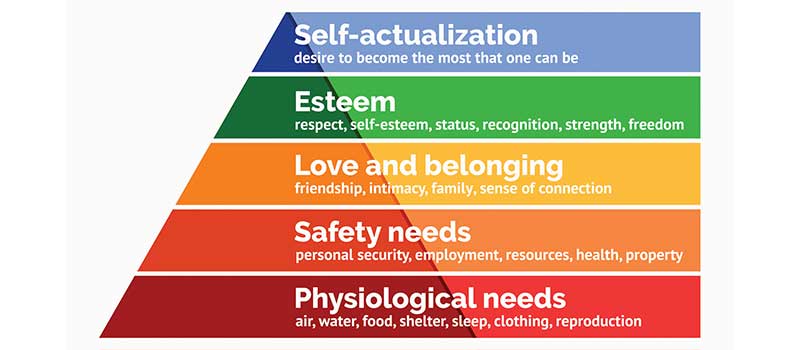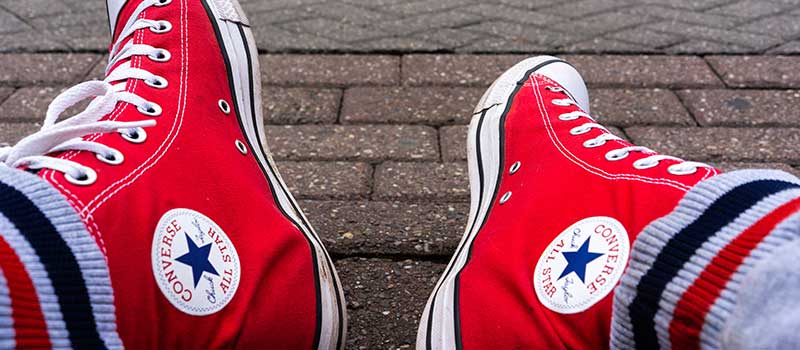When is comes to making buying decisions, it’s logical to think we all weigh up the pros and cons to come to a logical reason to buy.
But it doesn’t happen that way. Which is why your brand of car is different your friend’s and your brand of TV is different to your neighbour’s.
Our primitive brains are constantly processing information at lightning speed and each person processes information differently.
Most buying decisions are made in the sub-conscious mind and there are 5 Powerful Factors Influencing Consumer Behavior.
In this article, you’ll learn what they are and how to use them to influence your audience and grow your sales.
What Is Consumer Behaviour In Marketing?

The science of consumer behavior is quite new relatively speaking.
It began in the late 40’s early 50’s as a sub-set of marketing but has now evolved into an independent field blending psychology, sociology, marketing, economics and more.
The study of consumer behaviour in marketing determines how consumers make buying decisions to choose products, services and brands.
As a brand leader or marketing manager, it’s never been as important to understand how and why consumers make their buying decisions.
The more brand builders understand about the thought processes, emotions, environmental and motivational factors that influence buying decisions, the better positioned they are to influence those decisions.
Ultimately, the more you know, the more you can grow.
Why Consumer Behaviour Is Important?

Studying and analysing consumer behaviour allows brand builders and marketers to understand what influences their target market to buy.
Having a solution to a want or need quite simply, isn’t enough.
More often than not, it’s not the product or service on offer that influences the decision to buy, but the right combination of the buyer’s psychological requirements that are met.
Brand leaders who study the behaviours of their customers can determine:
What consumers think or feel about market alternatives (products, services, brands etc)
The most influential factors in the buying decision
The impact of consumers environment on their purchases
The more brands understand the pattern of behaviours of their target market, the more likely they are to influence those patterns.
How Psychological Buying Factors Influence Decisions

Every market is different and to go one further, every market segment is different.
While the most important buying decision factors for one market might include price and quality, for another market, they might be convenience and value.
Many businesses and brands become fixated on being “The best”, though that’s subjective.
Being the best on price and quality won’t influence the buying decisions as much in a market where the priority is convenience and value.
In other words, psychological buying factors influence decisions based on their importance to the target market.
Explore Brand Strategy
Programs & Tools
5 Factors Influencing Consumer Behaviour

The brand of car you bought is different to your friend’s.
The brand of TV you bought is different to your neighbor’s.
But what causes exactly causes your friend and your neighbor to make different choices to you.
Or more specifically, what are the factors influencing their decision to buy and why are they different to yours?
Typically, there are five core factors that influence the decision to buy which are:
Psychological Factors
Social Factors
Cultural Factors
Economic Factors
Personal Factors
So let’s dive deep into each one so we can understand them better.
Factor #1: Psychological Factors

Every decision we make in life whether it’s a decision to buy, a decision to have children or a decision to go to the pub on a Friday are influenced by our psychology.
So let’s explore these psychological decision making factors in detail.
Motivation

How motivated we are to do something has a high degree of influence on whether we do it or not.
In Maslow’s Hierarchy of Needs he outlines 5 different levels of human needs.
At the bottom are the basics like food and shelter, while at the top is self-actualisation.

If someone is worried about making rent to keep a roof over their head, then that will be the focus of their efforts rather than finding the purpose of their lives.
Likewise, If I’m unhappy with my body weight, then I’m far more motivated to get myself booked into a weight loss bootcamp than my neighbour who’s as thin as a rake.
How motivated we are to do something is the point of tension between where we are now and where we want to me.
Perception

Our perceptions are the way we regard, understand, interpret or see something based on our direct or indirect experiences.
For example, if my experience with an acquaintance is that he always follows through with what he says he’s going to do, well then my perception is that he’s reliable and can be trusted.
Perceptions are everything in branding.
Perceptions become reputations which become brand equity; the willingness buy or pay more for a brand.
The perception of Apple as a brand is that they’re a modern and innovative company creating superior products which is why they can price their products at such a premium.
The more effective brands are at positively influencing their audiences’ perceptions, the more they influence the buying decision.
Learning

What we learn through our experiences can change our buying behaviors and influence our future buying decisions.
For example, if you bought a pair of jeans that lost their shape after a few wears, then you’d be far less likely to buy that product or even that brand in the future.
This is why the brand experience plays such an important role in retaining customers long-term.
The better the brand experience, the more they learn to associate a positive experience with your brand and the more likely they will be to purchase again in the future.
The worse the experience is, the more likely your customer will learn from the brand experience and change their purchasing decision in the future.
Attitudes And Beliefs

Attitudes and beliefs are powerful buying decision factors because they tend to be born from deep experiential, emotional, and traditional enduring principles which are often unshakeable.
In other words, these attitudes and beliefs are next to impossible to change and the products and brands they buy either align with these beliefs or they don’t
Because attitudes and beliefs are so strong and emotionally charged, brands that understand their customer’s beliefs can align with them through their brand messaging.
Factor #2: Social Factors

As humans, we are social creatures.
We’ve learned to survive as a species by working together and the impact of our peers and their perceptions of us is important.
We all want to feel a sense of belonging. That we have our place and we’re part of something bigger so rightly or wrongly, we place a high level of importance on our social standing.
Our purchasing decisions reflect this with factors including:
Family

For most people, their family is their foundation and reference point for anything from a choice of partner to a choice of lipstick.
If the new partner gets the thumbs up from the fam, it’s game-on.
The same is true for brands, especially in the food & beverage category.
Some heritage or traditional brands make it into the coveted “Family brand” status. Offspring from a “family brand” household, will likely continue to use the brand throughout their lives.
Getting the family tick of approval is a common factor influencing buying decisions.
Reference Group

Reference groups or peer groups are groups of people that we associate with.
These groups could be from school, work, clubs, social, sports or even groups of friends or acquaintances.
People within these groups often have a similar pattern of purchasing behaviour and may be influenced by a popular leader of the group.

For example, growing up, my group of childhood friends were all into the same music, and the same style as most childhood friends are.
The kicks of choice for us… Converse All Star… and the purchasing decision for my bright red high-tops was directly influenced by my group of mates.
Factor #3: Culture and Traditions

We learn from our teachers, our families our friends and for the most part, in the early years anyway, these learning experiences tend to come from the same culture.
In other words, the values, preferences and behavioural patterns we adopt, are passed down through tradition and culture.
Culture & Traditions therefore influence our purchasing decisions with factors including:
Culture

Our culture shapes our basic values, requirements, beliefs, wants, preferences and behaviors.
In other words, our culture shapes who we are and who we are determines what’s important to us in life and in purchasing decisions.
Sub-Culture

Every culture consists of smaller sub-cultures that people identify with more specifically.
Although sub-cultures share the same overarching beliefs as the culture it’s formed under, they also have more specified beliefs that often differ from the rest.
Messaging speaking to sub-cultures will likely resonate more with that sub-culture than messaging to the overarching culture.
This is the exact same as messaging to market segments vs an overarching market.
Social Class

The social class of a person often influences what they buy
Social-class isn’t determined by a single factor such as income, rather a combination of factors including occupation, education, power, lifestyle etc.
Many purchasing decisions of Mercedes Benz cars have as much to do with the social class association it provides as the quality engineering it offers.
Factor #4: Economic Factors

Economic factors are hugely influential when it comes to purchasing behaviour as the determine the means available to consumers.
There are some purchases consumers simply cannot make, not because of their desires but due to their economic factors which include
Personal Income

How much income a consumer earns in a year is a direct determinant of how much discretionary and disposable income they have.
In other words, how much someone earns determines the means they have to spend and the freedom they have within their buying decisions.
The more financial freedom a consumer has within their buying decisions, the more their decisions can appeal to their desires.
Family Income

Family income and personal income are often interconnected but not always.
The more people within the family that are working the more likely the cost of living will be shared and individual spending capabilities will be enhanced.
This means more disposable income as a family and as individual consumers.
Income Expectations

Expectations of increased income can influence buying decisions.
Any expected increase in income often becomes mentally available to the buyert before the funds are physically or digitally available.
For example, a woman might see a nice pair of shoes that she wouldn’t ordinarily buy because of the high-price, but with her expected salary increase around the corner, she’s happy to put it on the credit-card and wear the cost later
Savings Plan

Savings in the bank or the contribution to savings can play a major role in the buying decision.
A decision to save now rather than spend will reduce the amount of available income in the buying decision.
If this savings is part of a longer-term plan, purchasing behaviour and the person’s overall purchasing profile will be affected.
Factor #5: Personal Factors

Personal factors influencing the buying decision process are circumstantial, situational and behavioural.
They set the scene and provide an insight into the life of the consumer which together play a role in how decisions are made. These factors include:
Age

The age of the customer or consumer is an overarching personal factor in influencing the buying decision.
We all have buying behaviour patterns which are liked directly to our age.
For example a 13 year old teenage boy is less likely to spend money on shaving products that he will when he’s 23.
Occupation

The occupation of a person often influences the buying decisions of individuals.
For example, a blue-collar professional working in downtown in the finance district will be far more likely to invest in professional and formal wear than an engineer consultant working onsite.
Lifestyle

A person’s lifestyle tells you about they way they live their lives which includes their activities, interests and hobbies and ultimately how they engage with the world around them.
Lifestyle branding that promotes a person’s ideal lifestyle aim to influence the buying decisions of their target market by aligning with the lifestyle they’re passionate about.
How To Use Factors Influencing Consumer Behaviour

Although every individual is different and their buying decision factors are different, the more specific you become with your target market and market segments, the more likely they are to share important buying decision factors.
Categorizing your market segments is simply the first step.
Once you’ve determined who you’re audience is and the important buying decision factors they share, you can tailor your offering to appeal to the factors that matter most.
But it doesn’t stop there. You can also create environments and situations that stimulate these factors as you’ll see with the IKEA example.
Examples Of Factors Influencing Consumer Behaviour

When it comes to household furniture, there are plenty of market segments.
IKEA have become an iconic brand by appealing to two very specific buying decision factors in both price and convenience.
Their budget prices and their convenient flat-pack designs allow for low-cost purchases that you can take-home and build yourself in the same day.
No overpriced pieces with long waiting periods and expensive delivery.
But IKEA didn’t just appeal to the important buying decision factors, they stimulated them by creating the perfect buying environment.

Every IKEA store requires you to walk through a journey of furnished rooms and sections with everything you could need for a new household at a low cost and convenient design.
Chances are, if you’re in the market for a new sofa, you might just be in the market for a new coffee table, and plant, and cushions.
This model shows us that influencing consumer behaviours is not just about appealing to their existing buying decision considerations, it’s also about designing an experience to stimulate their behaviour.
Over To You
Building a brand is about understanding your customer.
Where do they come from?
What’s their sub-culture?
What’s their economic situation?
What are their social factors?
What are their motivations?
When you identify the buying decision factors that are most important to them, do this
- Speak to those factors
- Create an environment to stimulate them
Comment below to share your thoughts or your favourite strategies to influence consumer behaviour.
On-Demand Digital Program
Brand Master Secrets
Make the transition from hired-gun to highly valued brand strategist in less than 30 days. The systems, frameworks and tools inside this comprehensive program are all you need to level up.








